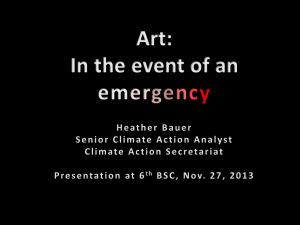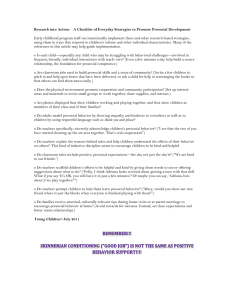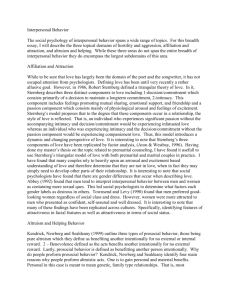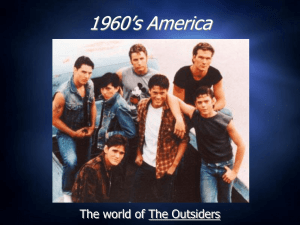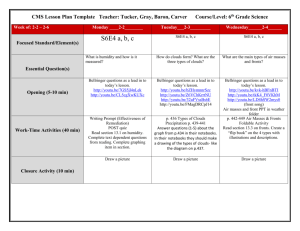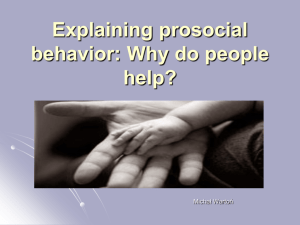File - Dr. Gallegos` Child Development Courses
advertisement
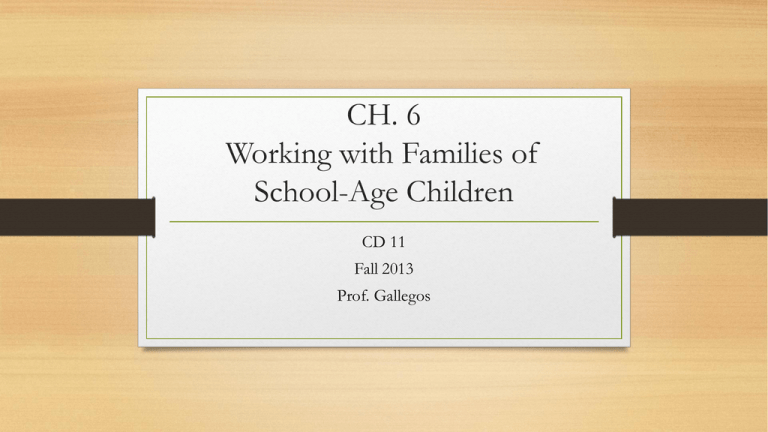
CH. 6 Working with Families of School-Age Children CD 11 Fall 2013 Prof. Gallegos Family-Centered Approach to Kindergarten • Teacher sees the importance of creating a relationship with each family so instead of one big orientation, they meet with each family individually or in small group over a period of time. • Some families might have a home visit before school starts Erikson’s Stages of Development • • • • Infancy 0-1 Basic trust versus Basic Mistrust Toddlerhood 1-3 Autonomy versus Shame & Doubt Preschool Years 3-6 School Age Initiative versus Guilt 6-10 Industry versus Inferiority Differences between Families and School & Preschool • Constructing Knowledge versus “Seat Work” (p.143) • Outdoor play time versus Recess What do Families Want? Exercise to build trust with each other Indoor garden+ Arts and crafts + Hygiene+ Basic table/life manners+ listening++ skills/communication (social)+ teamwork rhythm and music Community Respect++ Self-esteem anti-bully teacher-child ratio + Healthy Food++ extra curricular act’s PE+/movies/storytelling recycling security/safety+++ social abilities/PTA QUALITY After-school programs Tutoring A.P. Multicultural Partnership volunteering Child Studies for adults Fieldtrips + comfort Basic School Supplies clean environment open-minded freedom of speech Classroom Pet (responsibility) academics (ABCs) + compare and contrast problem solving(critical thinking) follow directions tie shoes consequences nap time onsite resources (social services) observational windows open door policies appropriate communication no CLUTTER DAP Go green! What they want • Communication with teachers • Written notes, phone calls, emails, newsletters, etc. Teaching Prosocial Skills • Our values begin when we are infants. They come hand in hand with our culture. • Some values are just absorbed while others are taught. • Everyone deals with morals and values with every decision we make. • We are FORCED to choose an ACTION and Go through the PROCESS of what we chose was a good decision. • http://youtu.be/aAFQ5kUHPkY Fairness/Cooperation Moral Development • 3 researchers studied moral development: Kohlberg (1976), Gilligan (1983) and Noddings (2005). • Kolhberg followed Piaget and saw a pattern of organization of moral thought. • Noddings and Gilligan focused on caring. • National Association for the Education of Young Children (NAEYC) recognizes the importance of “relationships” • Caring must be genuine and not just a means of coercion or emotional manipulation. • http://youtu.be/IAbTDlVTIqE Empathy The Power of Adult Attention • Pay attention to the child that is exhibiting the prosocial behavior • Giving them affirmations • Affirmations give messages that validate the person as an individual who has needs and rights • They are positive messages about expectations. • http://youtu.be/XNxnTVBuy70 Roots of Empathy Teaching Morals by Promoting Prosocial Development • • • • Model them yourself Explain why you are setting limits Encourage cooperation by finding ways to get children to work and play together Take a problem-solving approach when dealing with conflicts rather than a power stance. • Use guidance approaches • Examine your power relations with children (overpower vs. empower) (Cont.)Teaching Morals by Promoting Prosocial Development • Avoid using competition to motivate • Help children appreciate the world they live in and the people they share it with. • • • • Give choices Teach children to solve conflicts without violence Teach children to be peacemakers. http://youtu.be/7AN7x8zLFmU
